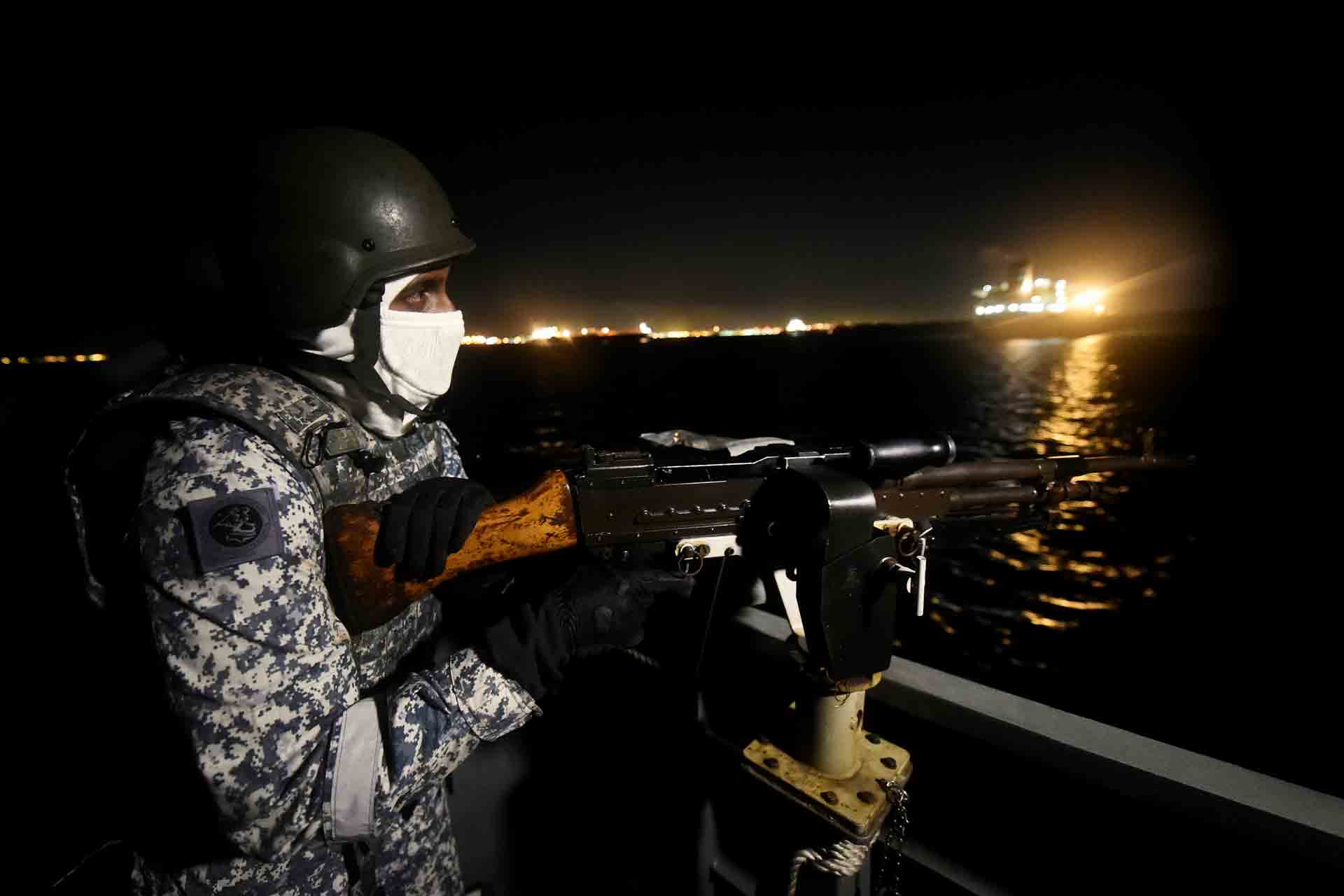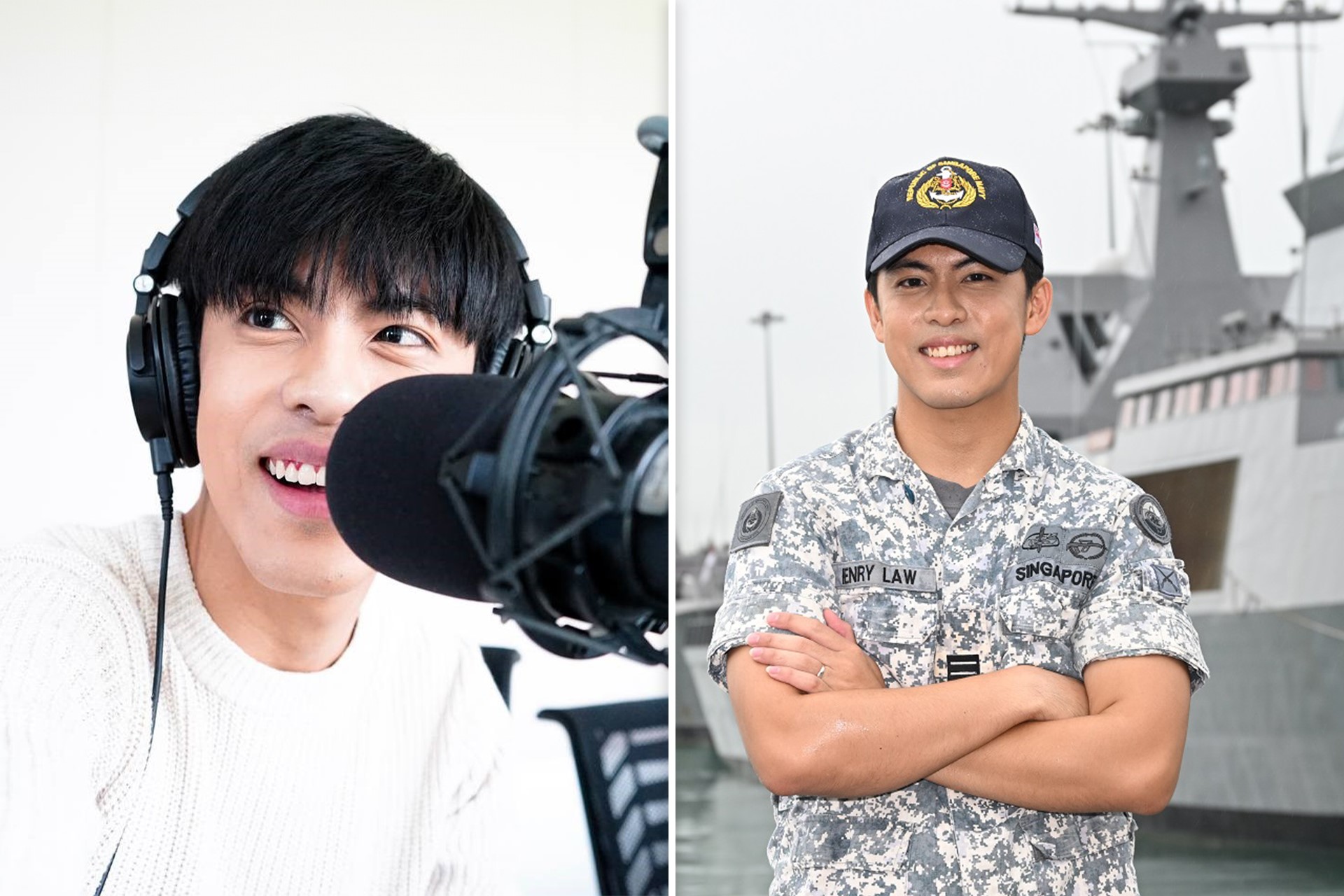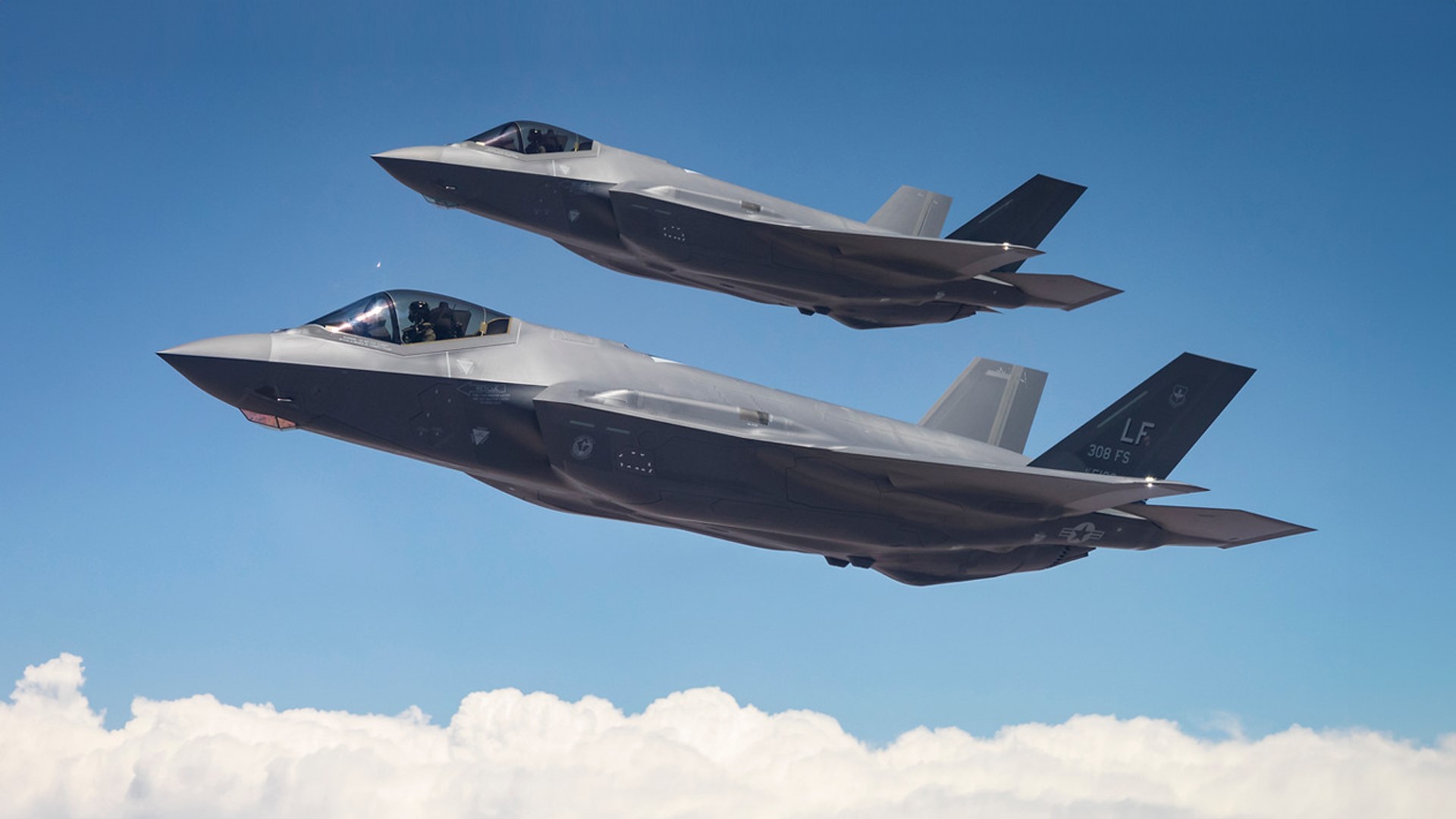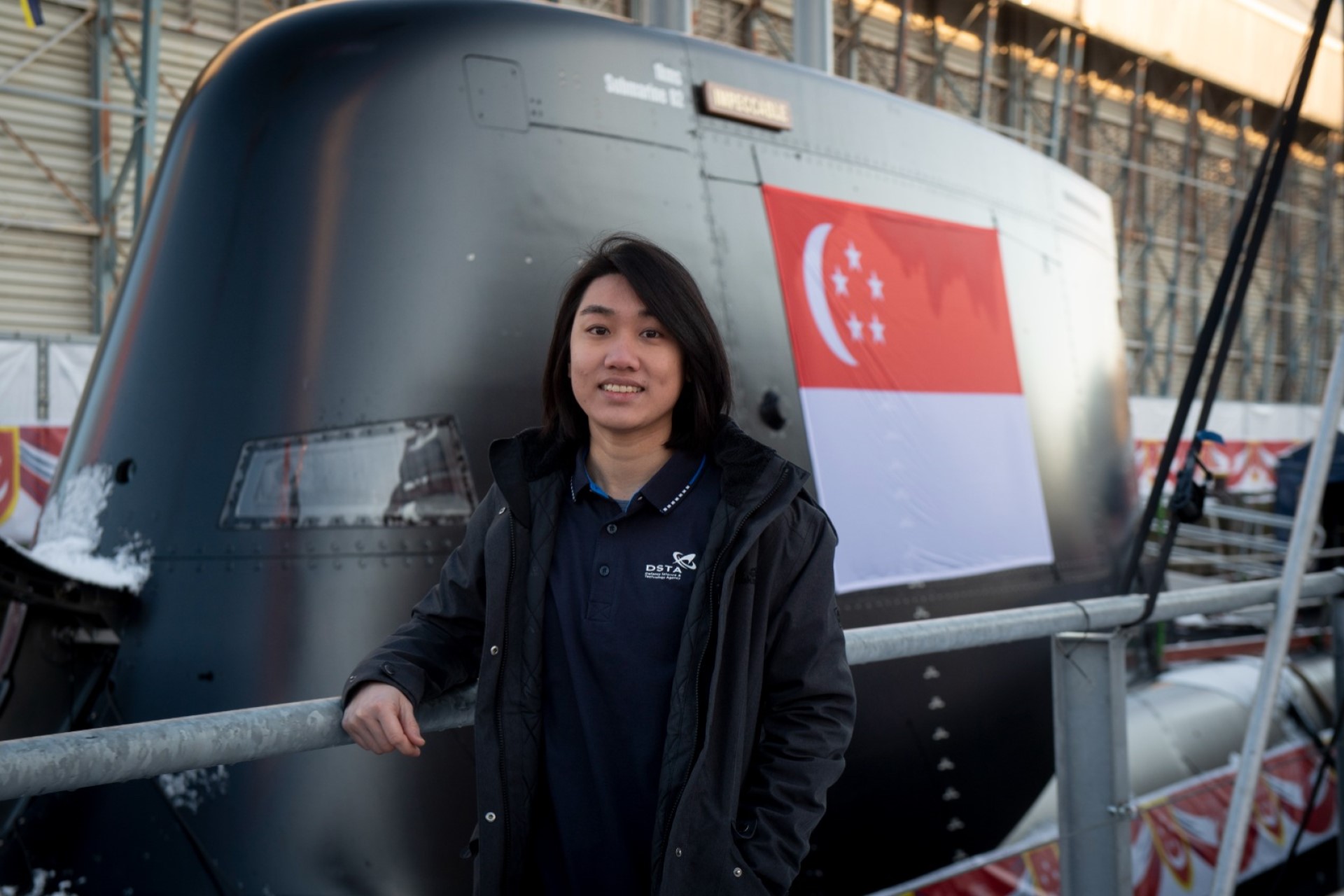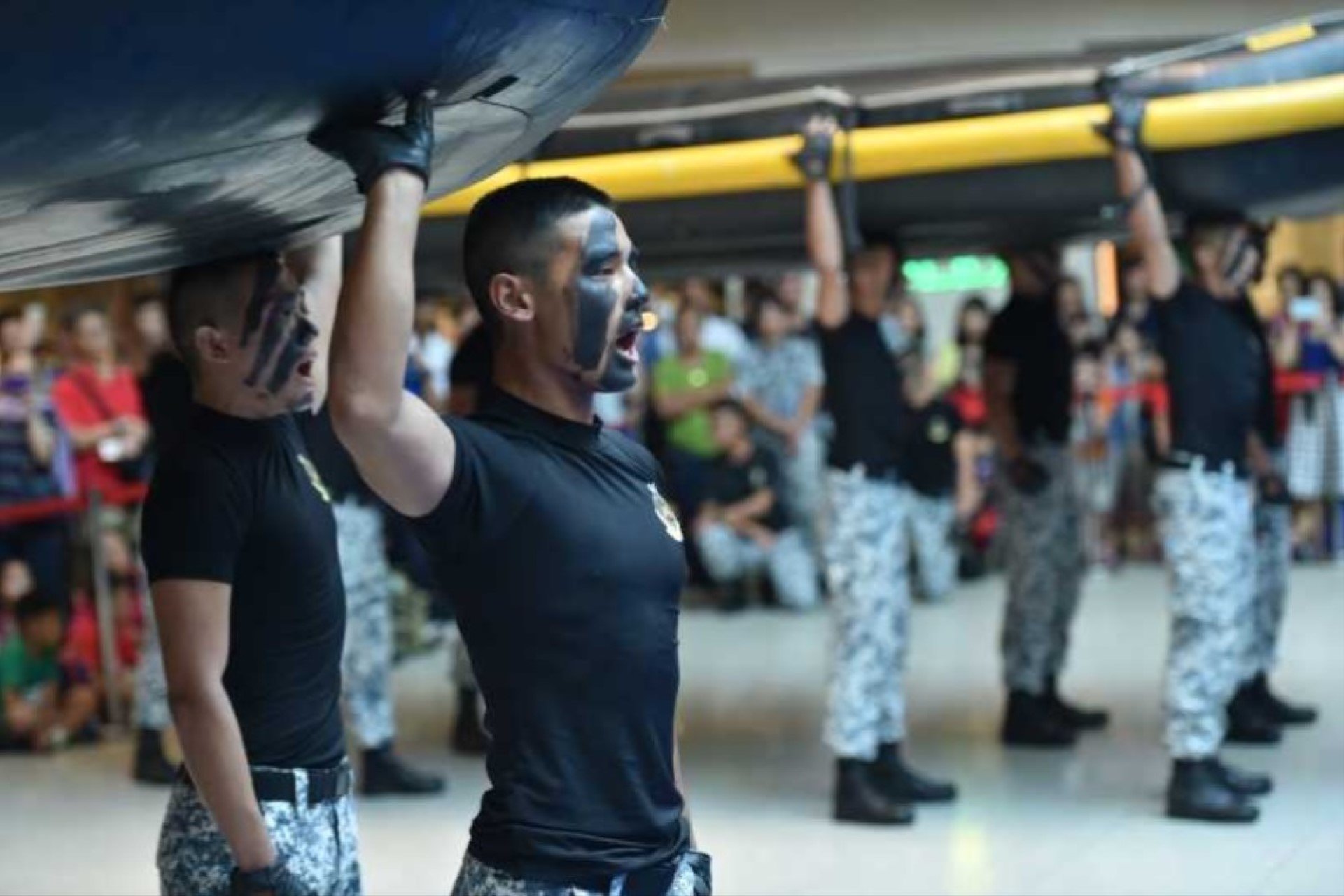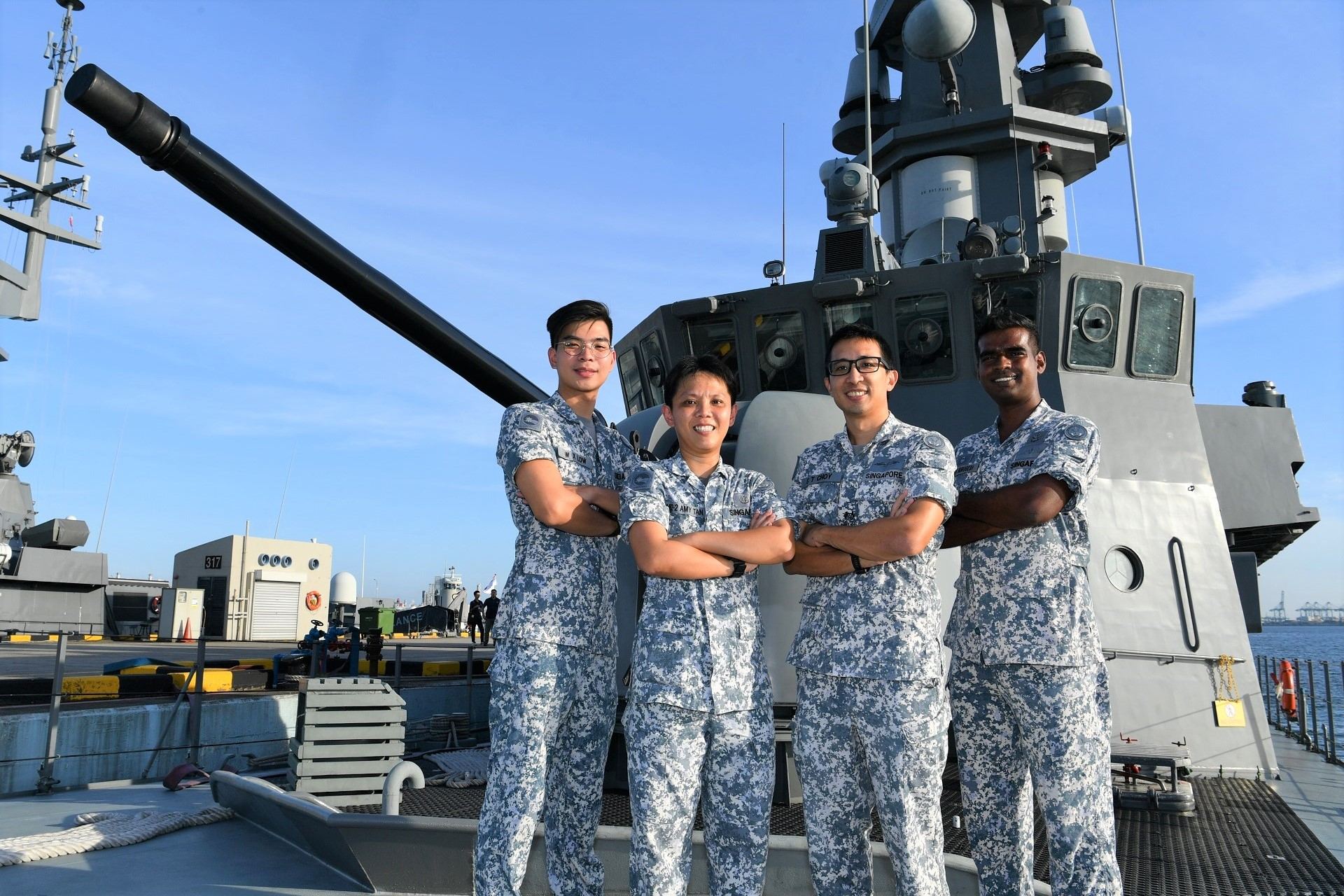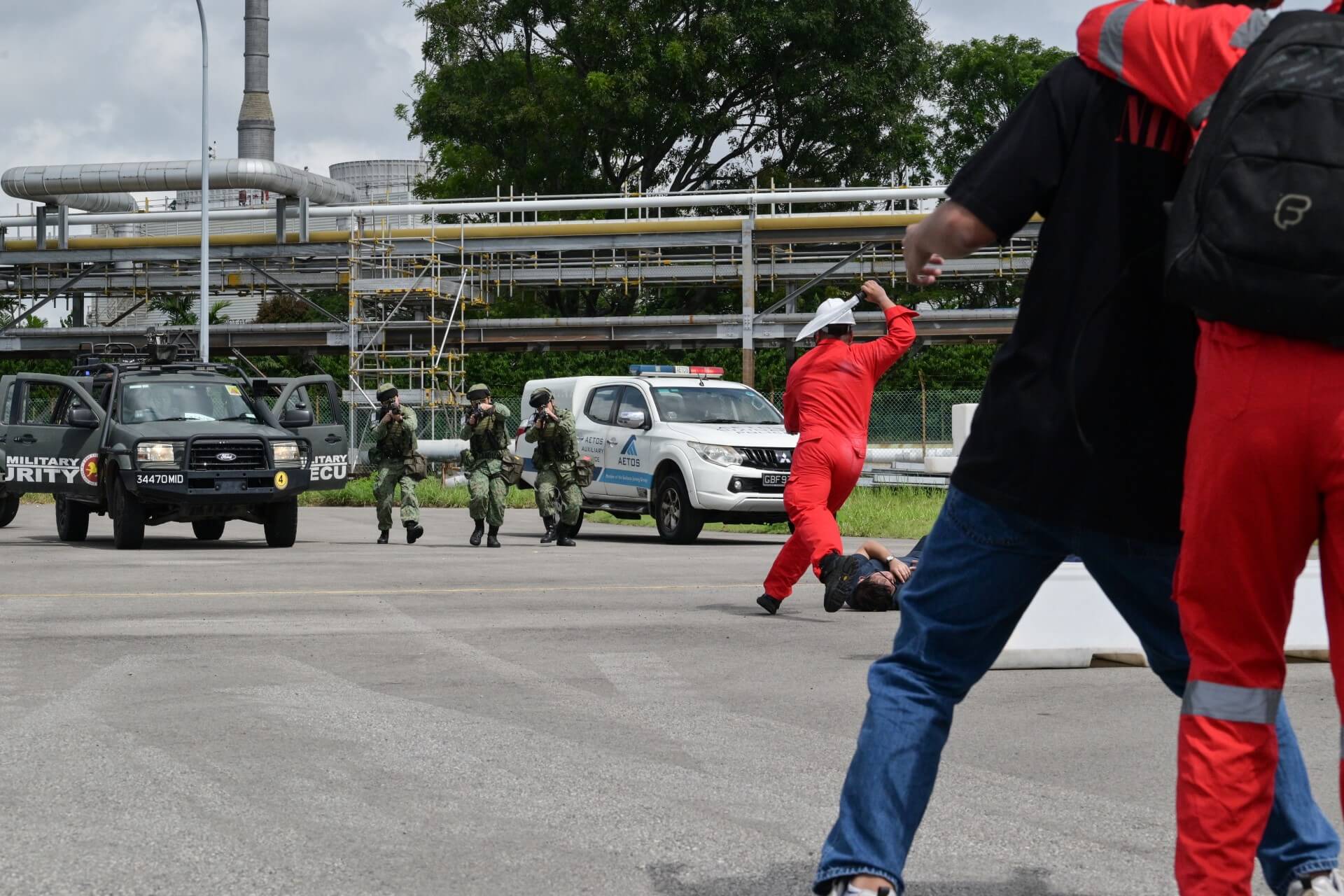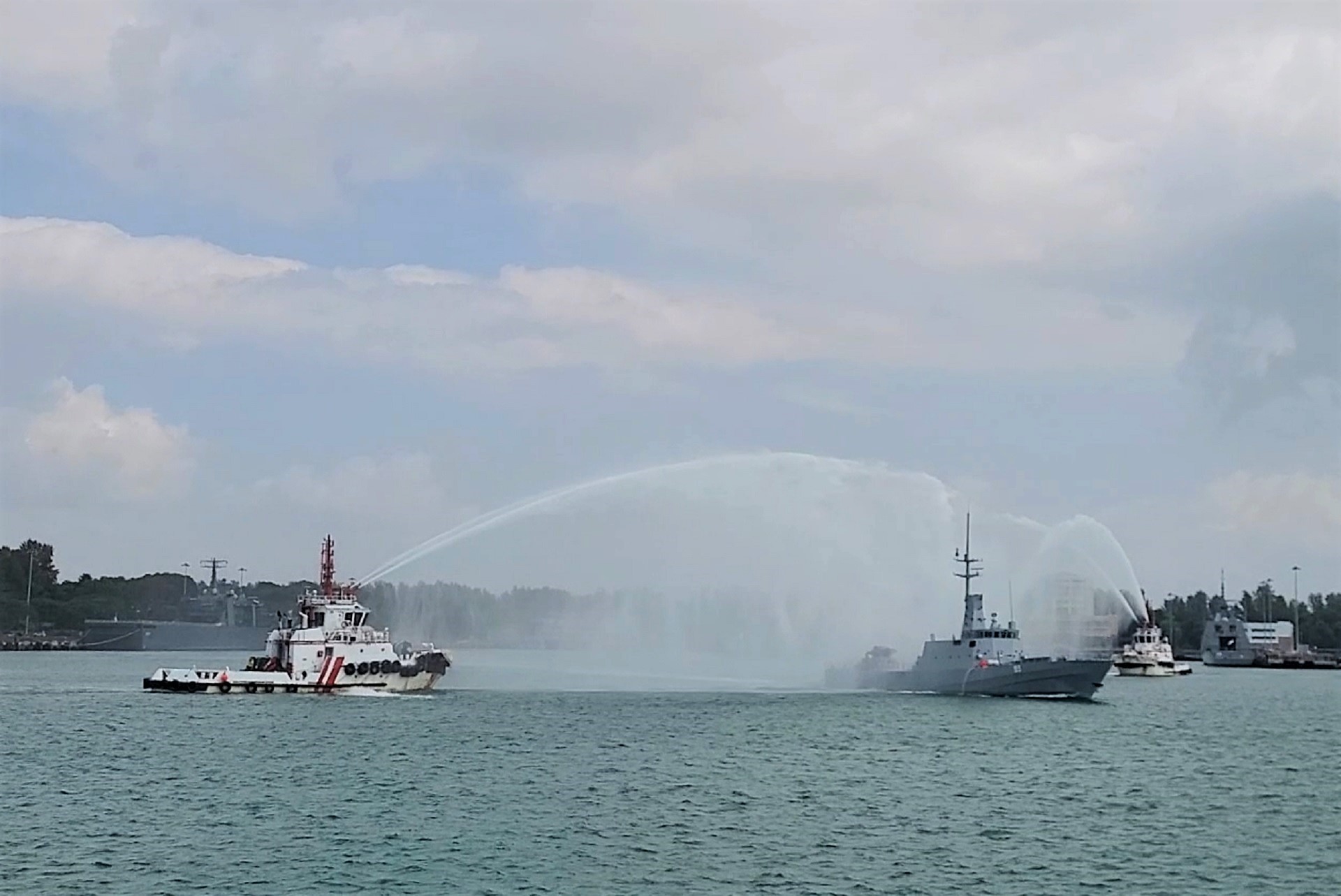Protecting Singapore's waters 24/7
PIONEER puts the spotlight on the Republic of Singapore Navy's (RSN's) Maritime Security Task Force (MSTF) and how it safeguards Singapore's waters against intrusions and security threats from the sea.// STORY Koh Eng Beng
// Photos PIONEER photographers
The Navy's Littoral Mission Vessel (LMV), RSS Independence, and two Singapore Police Coast Guard (PCG) boats were patrolling in the waters off Tuas on 3 Dec, when Malaysian government vessels dropped their anchors illegally in Singapore's territorial waters for the first time since Malaysia unilaterally extended its Johor Bahru Port limits into those waters.
Captain (CPT) Lee Jia Pei, then the Operations Officer of RSS Independence, described the situation as a tense stand-off.
"It's like someone putting his shoes inside your house, and claiming that this is his territory. We were very close to their ships, just one cable length or about 185m away," said the 29-year-old, who is now the Executive Officer of RSS Independence.
The maritime dispute began last October when Malaysia unilaterally extended the Johor Bahru port limits in a manner that encroached into Singapore's territorial waters.
Malaysian government vessels continued intrusions until early April. During that period, RSN ships and PCG boats kept watch round the clock over the waters off Tuas, to deter further provocations. No Malaysian government vessels were anchored in the area on 9 Apr, the day that the two countries' mutually agreed suspension of overlapping port limits came into effect.
Safeguarding sovereignty
The MSTF is in charge of operations to safeguard the sovereignty of Singapore's waters. It also protects the Singapore Strait from security threats such as terror attacks.
Set up in 2009, the MSTF comprises the LMVs, Patrol Vessels (PVs), Mine Countermeasure Vessels (MCMVs) and Accompanying Sea Security Teams (ASSeTs). The Task Force is also able to deploy assets from the Republic of Singapore Air Force (RSAF) and Singapore Army if needed.
Patrols to safeguard Singapore's waters are not new to the RSN. For example, the RSN has been patrolling the waters near Pedra Branca for decades, even before Malaysia laid claims to the island in 1979. Pedra Branca is an outlying island at the eastern entrance of the Singapore Strait — a major waterway for global trade.
RSS Brave was the PV on patrol on 23 May 2008 when it encountered a Malaysian navy ship in the waters near Pedra Branca. Coincidentally, it was also the day that the International Court of Justice (ICJ) was to rule whether Singapore or Malaysia had sovereignty over Pedra Branca.
Military Expert (ME) 3 Eng Cheow Ang, 42, then Command and Control (C2) Cluster Chief of RSS Brave, recalled the situation as being tense. The Malaysian ship continually sailed near RSS Brave at high speed, in a dangerous and provocative manner.
"We took immediate and decisive steps to avoid a head-on collision and issued warnings that these were our territorial waters," said ME3 Eng, now C2 Cluster Chief of PV RSS Gallant.
"We had to show our presence — to tell them not to meddle with us because we have always been patrolling there for so many years. At the same time, we had to show restraint because we did not want to escalate the situation." Later that day, the ICJ ruled that Pedra Branca belongs to Singapore.
Standing firm and calm
Commander of MSTF, Colonel (COL) Seah Poh Yeen, 47, said the patrol operations in waters off Pedra Branca and Tuas were challenging as the Navy had to show considerable restraint.
"Obviously, the simplest way, as a soldier, is make use of your firepower. But that would only escalate the situation. To truly deal with the problem, it's really through talks and diplomacy. Our ship crew are aware of this and we understand (the need for restraint)."
He added: "We know these matters take time to resolve. We always say the SAF gives strength to the nation; at the end of the day, we must give Singapore the necessary backing at the negotiation table."
Countering terrorism
Besides protecting the sovereignty of Singapore's waters, the MSTF safeguards the Singapore Strait from possible terror attacks.
The LMVs and PVs conduct daily patrols and escort ships transiting through Singapore waters. Working together with other maritime agencies, ASSeTs carry out boarding operations on commercial ships to check for illegal weapons and suspicious persons.
Why does the MSTF keep such a tight watch over Singapore's waters? To prevent potential attacks like that which rocked Mumbai, India in 2008.
That incident saw a group of Pakistani terrorists hijack a fishing boat to enter Mumbai by sea. They then carried out a series of shootings and bomb attacks across the city which left more than 150 people dead.
With about 1,000 commercial vessels transiting through its waters daily, Singapore is vulnerable to such attacks.
"This is why we keep vigilant every day round the clock, to make sure that such threats do not slip through any crack," said COL Seah.
To neutralise these threats as far away from Singapore as possible, the MSTF has to detect them early so that its forces can be deployed in time.
This is done primarily through a network of surveillance radars and electro-optics sensors along Singapore's coast and on off-shore islands that constantly track the ships passing through Singapore's waters.
Whole-of-government approach
However, with the large volume of daily sea traffic in Singapore's waters, it is not feasible for the MSTF to check on every single ship.
"Recognising we cannot do this alone, we have taken a Whole-of-Government (WoG) approach and collaborated with the maritime community as well as like-minded international partners to share information and flag out any potential threat early, even before it comes into the Singapore Strait," said COL Seah.
The WoG coordination is done through the Singapore Maritime Crisis Centre (SMCC), which is co-located with the MSTF at the Changi Command and Control Centre. These are all located within RSS Singapura – Changi Naval Base.
The SMCC brings together personnel from the RSN, Maritime and Port Authority of Singapore (MPA), Immigration & Checkpoints Authority (ICA), PCG and Singapore Customs to coordinate joint operations.
Using artificial intelligence and data analytics, the centre scrutinises the maritime situation 24/7 to look out for anomalies.
Where is this ship going? Did it come from a breeding ground for terrorists? Are the crew blacklisted? What cargo is it carrying? These are some of the data that the SMCC looks into.
"Data analytics is done on the thousands of vessels that pass through our waters every month, to detect any anomalies. This helps us to focus our surveillance efforts," said COL Seah.
A simple example of an anomaly would be a merchant ship taking a detour, instead of taking the fastest route to save fuel.
"We don't know why (that ship) took a detour, so we need to understand the situation better. We will run checks and decide if we want to take a closer look. We may send ASSeT crew to go on board the ship. Or we could have our LMVs escort the ship into Singapore," COL Seah explained.
A WoG approach also allows the different agencies to understand each other's perspective better, and helps develop a common approach to tackle maritime incidents or threats, he added.
"One of the key challenges is to ensure that all of us are in sync and our actions on the ground are consistent. We may look at things from different perspectives — whether it be in terms of security or managing trade flow — but we are usually able to very quickly come to a common solution."
Tight inter-agency cooperation
While the MSTF takes part in regular exercises such as Apex and Highcrest with PCG and other maritime agencies to enhance their cooperation, COL Seah noted that they also develop a strong level of understanding through their day-to-day joint operations.
"There are real incidents happening at sea almost every day that we deal with together, so our linkage is very strong."
Examples of such daily incidents that the MSTF and other agencies deal with include illegal intrusions, ship collisions, ship fires, and more.
Citing ship collisions as an example, COL Seah explained: "We work with one another to conduct search and rescue, and to discern whether it was an act of terrorism.
"In this day and age, we cannot assume that such incidents are benign."
Inter-agency exercises are useful in training for high-end operations — like the deployment of Special Operations Task Force personnel to storm a ship. Cooperation is not only strengthened among the operation planners, but also between forces at sea.
Successful operations
Last year, the MSTF successfully conducted two large-scale maritime security operations, contributing to the safe and smooth conduct of the Democratic People's Republic of Korea (DPRK)-United States of America (USA) Singapore Summit in June and the ASEAN Summit in November.
Warships such as LMVs and PVs escorted vessels passing through the area, while ASSeTs conducted boarding operations to carry out checks. Unmanned Aerial Vehicles and AH-64D Apache helicopters were also deployed to help keep an eye out for threats from the sea.
In these operations, the MSTF incorporated lessons learnt from dealing with the terror plot by Indonesian militants to launch a rocket attack at the Marina Bay area from Batam island.
"We were concerned about rockets and projectiles fired from the sea…so we conducted massive boarding operations to check on vessels that may potentially be used as a staging platform to fire rockets into our area," said COL Seah.
Key role for NSmen
One of the ASSeT operators who took part in the ASEAN Summit security operations was Corporal First Class (CFC) (NS) Nicholas Lim. The 28-year-old Operationally Ready National Serviceman (NSman) volunteered for the operation as part of his annual In-Camp Training (ICT).
His role was to go on board commercial vessels to check for illegal weapons and suspicious crew. He conducted three to four boarding operations each day during the ASEAN Summit.
A self-described lao peng (Hokkien for old soldier), CFC (NS) Lim has conducted numerous boarding operations during his two years of full-time National Service, as well as five ICT sessions.
Before NSmen are deployed for boarding operations, they go through refresher training on the use of weapons as well as climbing the Jacob's ladder. Half of the ASSeT operators in the Navy are Full-time National Servicemen and the other half are Regulars. They are supported by NSmen like CFC (NS) Lim.
Asked why he volunteered for the operation, he said: "I am the kind of person who likes to be at the front line, doing the garang (Malay for fierce) stuff. And I grew up here; everyone has to play his part to help protect our country."
Expect the unexpected
Besides safeguarding Singapore's waters, the MSTF has to be prepared for unexpected contingencies like extending assistance to ships in distress.
For example, US Navy destroyer USS John S McCain collided with a commercial ship in Singapore's territorial waters in 2017. The MSTF deployed warships and helicopters as part of a multi-agency search and rescue effort, led by MPA.
Said COL Seah: "When USS John S McCain collided, it was in Singapore's territorial waters. It was important for us to control the situation and traffic, provide assistance and escort the ship back. It's no different from a traffic accident on land, you need to conduct investigations and understand what went wrong."
Preparing for the future
The MSTF has kept an eye on the future, even while it is busy with its daily operations.
There were two key developments in the last 10 years: replacing the ageing PVs with the LMVs, and developing modern Unmanned Surface Vessels (USVs).
Currently, five LMVs have turned operational. By 2020, all eight LMVs are expected to be battle-ready. With its advanced automation, the LMV can be operated by a lean crew of 23. Its predecessor PVs are manned by a crew of 30 each.
Unlike traditional navy ships, the LMV houses the three control functions of the ship — navigation, combat and engineering — together in an integrated command centre. This allows for greater cooperation and communication among the crew.
BOOSTING INTERNATIONAL INFO-SHARING & COOPERATION
The Maritime Security Task Force also works with foreign navies to tackle maritime security threats and incidents.
This is done through the Information Fusion Centre (IFC), which was set up by the Republic of Singapore Navy (RSN) in 2009.
The centre brings together officers from many navies to update, share, analyse, fuse and disseminate information. This includes ship data such as its name, identification number, length, cargo and crew; smuggling routes; piracy hotspots; and possible locations of missing vessels.
Such information helps the various navies, coast guards and maritime agencies plan their operations when dealing with security threats and crimes like terrorism, piracy, illegal migration, weapons proliferation, contraband and drug smuggling.
Over the past 10 years, 150 International Liaison Officers (ILOs) from 23 countries have been deployed to the IFC. Currently, 19 ILOs from 18 countries serve alongside 12 RSN personnel.
The IFC has linkages with more than 80 agencies from 40 countries. It can also obtain privileged and commercially sensitive information from the shipping community.
Lieutenant Colonel (LTC) Gary Ow, 42, Head of IFC, said: "Terrorism is a common enemy that all countries face… We need to deal with maritime security in a very different light — by looking regionally, not just within the Singapore Strait.
"For example, if the hijacking of a ship took place in another country's waters, the IFC can inform the country straightaway so that its security agencies can take action immediately."
Improving regional maritime security
Just how useful is the IFC in helping to thwart threats at sea?
In 2016, the IFC was alerted to an oil tanker, MV Hai Soon 12, that went missing. It was likely hijacked, but no one knew its location, making a
rescue effort almost impossible.
"We asked ourselves, how could we get information through other sources to pin-point its location?" said LTC Ow.
"Because the tanker was carrying cargo worth $3 million, we went to the cargo owner who told us that another GPS tracker was placed on board to insure the cargo. From there, we were able to get real-time location updates which we passed to the Indonesian navy."
The Indonesian Navy activated three warships to intercept MV Hai Soon 12, arrested the hijackers and recovered the ship. This was accomplished just eight hours after the incident was reported to the IFC.
Lieutenant Commander (LCDR) Luu Cong Uan, 40, an ILO from the Vietnam People's Navy, said the IFC plays an important role in keeping the Asia-Pacific region peaceful and stable — by being a bridge that connects navies, maritime agencies and shipping companies from various countries.
On working with ILOs from other countries in the IFC, he said: "There's great cooperation; we meet every day to discuss and clarify information on maritime incidents to help us create an overall picture."
Fellow ILO Commander (CDR) Amilcar Hernan Velasquez Vargas from the Peruvian Navy shared similar sentiments. The 43-yearold even plans to build a similar information-sharing hub in Peru for the South American region.
Looking ahead
To allow easy access to real-time information, the IFC has developed an Internet-based info-sharing portal.
To be launched in mid-May, the portal will allow international and regional naval officers to access information from their smartphone or computer. Warships at sea can also communicate with one another through the portal.
The IFC is also exploring the use of data analytics to make sense of relationships between unstructured or random data. This will help the IFC detect anomalies faster.
Using cars as an analogy, LTC Ow explained: "How do you link my name to a car brand, to a car distributor, and to a petrol kiosk that I always buy fuel from? All this data is actually on the Internet; using artificial intelligence, we can group them together and generate new insights."
The move to unmanned operations
The 16m-long USV is equipped with sensors and algorithms to automatically correct its course and speed to avoid collisions. It is controlled remotely by a team of four on shore.
The Navy is developing three types of USVs — one for coastal patrols, one for underwater mine detection and another for mine disposal.
The former will eventually take over patrols of the Singapore Strait, which are currently conducted by the LMVs and PVs. The USVs for mine detection and disposal will replace the MCMVs in mine hunting operations.
ME3 Ng Chee Keng, 42, is leading his team in the testing of USVs for mine disposal. As a former Underwater Cluster Chief of MCMV RSS Bedok, he knows full well the dangers of minehunting.
"An MCMV is built to absorb shockwaves but you might face a bigger blast than expected. For a USV, even if the shockwave cripples the USV, there is no one on board. That's the greatest advantage of a USV — keeping our people out of harm's way."
Another advantage is the manpower saved, added the USV team lead.
An MCMV sails with a crew of 32. In contrast, two USV teams of four crew each can remotely operate a pair of USVs for mine detection and disposal.
Furthermore, it takes only 10 minutes to launch a USV to sea for operation. An MCMV out at sea needs about an hour to prepare and launch an underwater sonar for mine detection operations.
The USV for mine detection was deployed in its first-ever drill at Exercise Apex last year.
In the exercise scenario, ME3 Ng's USV team was tasked to comb an area for possible sea mines planted by terrorists. Although the USV was still undergoing testing, it was able to detect the simulated mines successfully.
The team is working closely with DSO National Laboratories to improve the performance of the USV for mine disposal. Tests are expected to be completed by the end of this year.
Always ready
The MSTF has to be operational 365 days a year. As such, it places great emphasis on the readiness of its ships, weapons, systems, and logistics. For example, warships that are rostered for duty go through a stringent check of their readiness condition before the start of each day.
It is not just hardware that is under scrutiny. The MSTF also watches the condition of its sailors, similar to how a football manager keeps his players in top form with optimal training as well as rest and recovery.
This was particularly important in 2018, when MSTF had one of its most challenging years, mounting two major operations — the DPRK-USA Singapore Summit and the ASEAN Summit — on top of its routine operations.
COL Seah recalled that when the persistent intrusions into the waters off Tuas were ongoing in December 2018, many staff were on year-end leave. However, no one had to be recalled for duty.
"The MSTF is structured for 24/7 operations — we make sure we have enough people around to deal with any situation. Singaporeans can be assured that there is no downtime. There is not a single day when we are not at the front line."
Even though 2018 was a busy and challenging year, servicemen and women remained upbeat, thanks to the outpouring of support from Singaporeans for the RSN on social media.
Said CPT Lee: "Because of the recent incidents, people have started to notice MSTF and realise what we do affects their every day. When we are out there, we are doing real operations."
